Country Greece Max length 15 km Max width 10 km Population 10,134 (2011) Area 105.2 km2 | Region | |
Mykonos ( Greek: ) is a Greek island, part of the Cyclades, lying between Tinos, Syros, Paros and Naxos. The island spans an area of 85.5 square kilometres (33.0 sq mi) and rises to an elevation of 341 metres (1,119 feet) at its highest point. There are 10,134 inhabitants (2011 census) most of whom live in the largest town, Mykonos, which lies on the west coast. The town is also known as Chora (i.e. the Town in Greek, following the common practice in Greece when the name of the island itself is the same as the name of the principal town).
Contents
- Map of Mykonos
- Top things to do in mykonos greece
- Mykonos greece travel guide mustsee attractions
- History
- Geography
- Landmarks
- In popular culture
- Cuisine
- References
Map of Mykonos
Mykonos nickname is The island of the winds. Tourism is a major industry. Widely known for its nightlife, Mykonos is called "Ibiza of Greece" for its summer club scene which attracts very large numbers of tourists every year. The island is also a well-known gay destination with a very vivid gay scene.
Top things to do in mykonos greece
Mykonos greece travel guide mustsee attractions
History
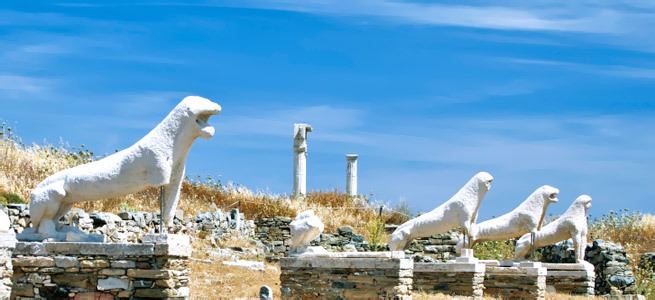
Archaeological findings suggest the presence of the Neolithic tribe Kares on the island in 3000 BC, but the first real settlers seem to be the Ionians from Athens in the early 11th century BC. There were many people living on the neighbouring island of Delos, just 2 km (1.2 miles) away, which meant that Mykonos became an important place for supplies and transit. It was, however, during ancient times a rather poor island with limited agricultural resources and only two towns. Its inhabitants were pantheists and worshipped many gods.

Mykonos came under the control of the Romans during the reign of the great Roman Empire and then became part of the Byzantine Empire until the 12th century. In 1204, with the fall of Constantinople in the Fourth Crusade, Mykonos was occupied by Andrea Ghisi, a relative of the Doge of Venice. The island was ravaged by the Catalans at the end of the 13th century and finally given over to direct Venetian rule in 1390.
In 1537, while the Venetians still reigned, Mykonos was attacked by Hayreddin Barbarossa, the infamous admiral of Suleiman the Magnificent, and an Ottoman fleet established itself on the island. The Ottomans, under the leadership of Kapudan Pasha, imposed a system of self-governance comprising a governor and an appointed council of syndics. When the castle of Tinos fell to the Ottomans in 1718, the last of the Venetians withdrew from the region.
Up until the end of the 18th century, Mykonos prospered as a trading centre, attracting many immigrants from nearby islands, in addition to regular pirate raids. In June 1794 the Battle of Mykonos was fought between British and French ships in the islands main harbour.
The Greek Revolution against the Ottoman Empire broke out in 1821 and Mykonos played an important role, led by the national heroine, Manto Mavrogenous. Mavrogenous, a well-educated aristocrat guided by the ideas of the Enlightenment, sacrificed her familys fortune for the Greek cause. Greece became an independent state in 1830. A statue of her sits in the middle of Mando Mavrogenous square in the main town.
As a result of sailing and merchant activity, the islands economy quickly picked up but declined again during the late 19th century and especially after the opening of the Corinth Canal in 1904 and the First World War at the beginning of the 20th century. Many Mykonians left the island to find work in mainland Greece and many foreign countries, especially the United States.
Tourism soon came to dominate the local economy, owing a lot to the important excavations carried out by the French School of Archaeology, which was began work in Delos in 1873.
In the 1930s many famous artists, politicians and wealthy Europeans began spending their vacations on the island and Mykonos quickly became an international hot spot. Temporarily suspended during the Second World War, tourists once again rushed to Mykonos luxurious shores in the 1950s and have not stopped since.
Geography
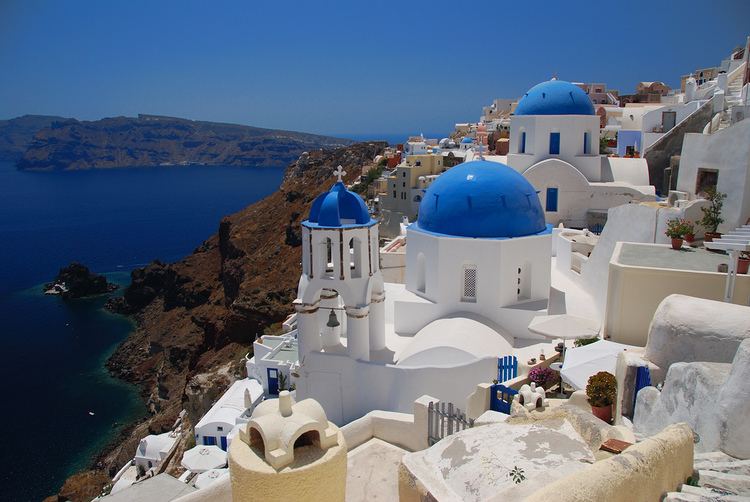
The island spans an area of 85.5 square kilometres (33.0 sq mi) and rises to an elevation of 341 metres (1,119 feet) at its highest point. It is situated 150 kilometres (93 miles) east of Athens in the Aegean Sea. The island features no rivers, but numerous seasonal streams two of which have been converted into reservoirs.
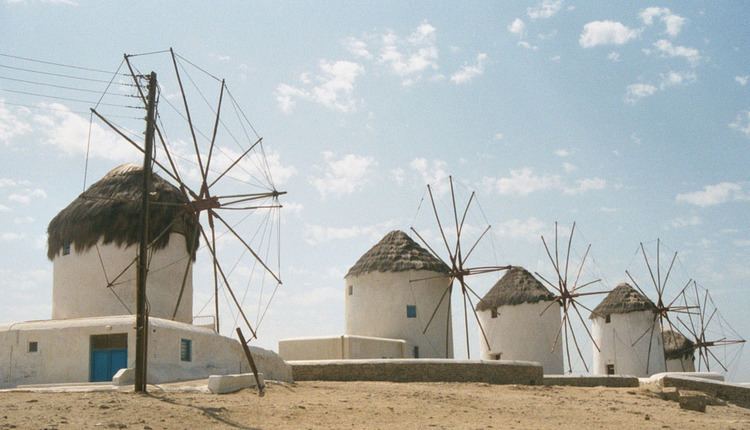
The island is composed mostly of granite and the terrain is very rocky with many areas eroded by the strong winds. High quality clay and barite, which is a mineral used as a lubricant in oil drilling, were mined on the eastern side of Mykonos until the late 1900s.
Mykonos gained the nickname "Capri of Greece" because of its numerous beaches.
It produces 4,500 cubic metres (160,000 cu ft) of water daily, by reverse osmosis of sea water in order to help meet the needs of its population and visitors.
The island has a population of nearly 12,500, most of whom live in the main town of Chora.
Landmarks
The original Neoclassical building underwent refurbishments and expansions in the 1930s and 1960s and the large eastern room was added in 1972. The museum contains artefacts from the neighbouring island Rhenia, including 9th- to 8th-century BC ceramic pottery from the Cyclades and 7th- to 6th-century BC works from other areas in the Aegean. Its most famous item is the large vase produced in Tinos, showing scenes from the fall of Troy.
In popular culture
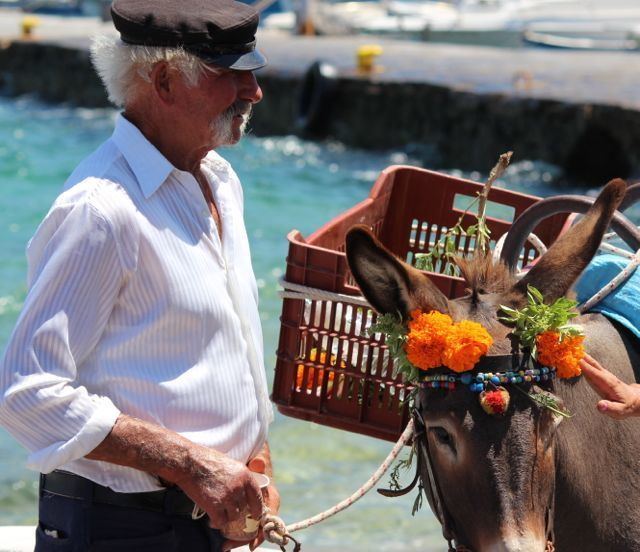
Cuisine
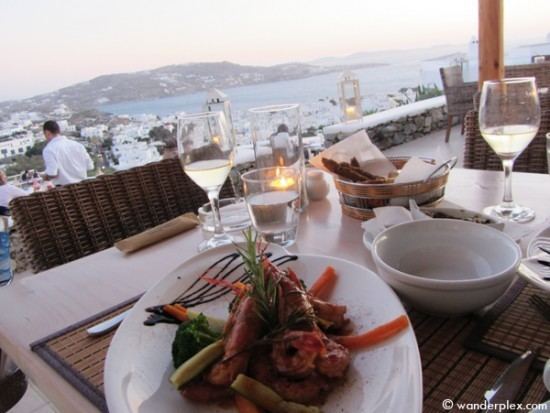
Local specialities:
